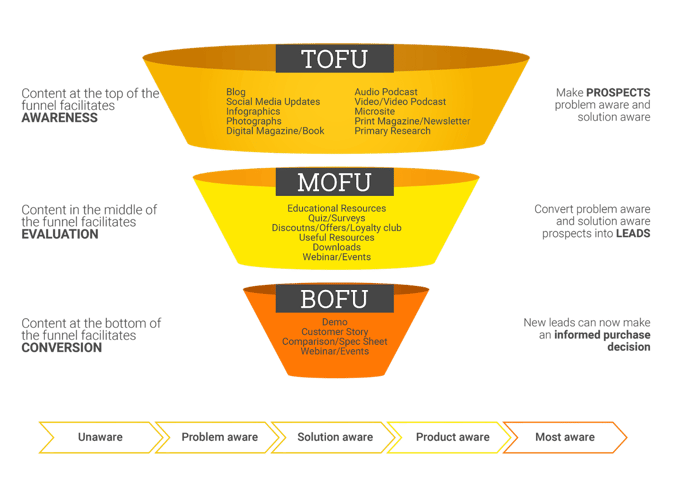
Today, we measure lots of different things, including website visits and conversion rates. As an online marketer you need to establish your goals and define your KPIs (Key Performance Indicators) before executing your campaigns.
- But which KPIs are important?
- And which should you track and try to improve?
It all starts with 'why'
Online marketers should let themselves be inspired by Simon Sinek*. You’ll need to ask yourself the why – how – what questions if you want to improve your marketing activities.
Where as repeating what you’ve always done may seem the easiest way to move forward, you need to challenge yourself and ask yourself these questions.
If you are clear about why you are doing it, how you can do it better than your competitors and what you can offer your customers, you will improve your customer involvement and your revenue over the long term.
Where as repeating what you’ve always done may seem the easiest way to move forward, you need to challenge yourself and ask yourself the ‘why’, ‘how’ and ‘what’ questions.
Reasonable KPIs
The act of defining your KPIs will force you to think about these questions. It’s easy to define random KPIs, but it is far more valuable to track and improve reasonable KPIs that deliver your marketing and business goals. Here we define 3 KPIs that we believe every online marketer needs to measure for marketing success.
1. Marketing Return on Investment (MROI)
The Marketing ROI is a well-known KPI to evaluate the efficiency of an investment. The reality is: the more complex your marketing mix, the more touchpoints you’ll need to consider and track.
To calculate the ROI, you divide the benefit (return) of an investment by the cost of the investment. The result is a percentage that’ll no doubt vary per touchpoint. An example of a benefit (of an investment) could be the revenue of a client.
The cost of the investment could be the media and production costs or the customer acquisition cost. If an investment’s ROI is net positive, it is probably worth it. But if other opportunities with higher ROIs are available, this suggests that you might eliminate some options or choose others. Avoid negative ROIs. They are simply net losses … unless of course you’ve made that choice for strategic reasons.
To measure your Marketing ROI, make sure your analytics are in order. Focus on the right data and analyse that data for every marketing mix.
Use the ROI insights to focus on efforts that deliver the highest returns and define a reasonable KPI for your ROI. For example in Q1 an ROI of 5% for your display campaigns and 12% for your email campaigns; then look to try and improve these KPIs in Q2.
2. Traffic-to-Lead conversions
Measuring all your touchpoints is key. By looking at different parts of the funnel, you can generate deeper insights and optimise all stages within the funnel. With Traffic-to-Lead conversions, you can see how much traffic you generate to your website or how many subscribers, leads, or users you are generating from your Top-of-Funnel (TOFU) efforts.
Which sources bring the most leads?
SEO or SEA? Email or Newsletters?
These metrics will help you measure Traffic-to-Lead conversions:
- Quantity of traffic (volume)
- Number of conversions
- Conversion rate (CTR)
All three will help you make better traffic generation decisions.
Look at the high performers and compare them with the lower ones and define a reasonable KPI for each of your sources. An example? Aim to convert at least 30% of your SEO traffic into a lead.

The Marketing funnel by three different stages: TOFU – MOFU – BOFU
Source image: shopify.com
3. Lead-to-Sales conversions
Once you have converted traffic into leads, it's time to convert them into sales. For that you’ll need to focus on Bottom-of-Funnel (BOFU) sources. To accurately measure this KPI, you must first map out all stages of your funnel.
- At what point does a subscriber become a lead, an opportunity, or a serious buyer?
- Which touchpoints generate the most conversions?
- Which messages, keywords, ads are the most efficient?
One way of measuring Lead-to-Sales conversions is to take into account the number of people who finished a sales flow.
Segment your leads with retargeting ads to reengage them to go through the entire funnel. Messenger is becoming an increasingly popular engagement channel to help customers and provide them with content that solves specific issues for specific buyers’ personas.
Lead-to-Sales conversions require constant follow-up: measurement, evaluation, testing, optimisation. By understanding metrics at all stages of the funnel, you’ll know where you need to focus on and which KPIs could be reasonable. For example, a minimum Lead-to-Sales conversion rate of 20% for your SEA campaigns in Q1 or at least 10 sales via dedicated Newsletters in the first semester.
Messenger is becoming an increasingly popular engagement channel to help customers and provide them with content that solves specific issues for specific buyers’ personas.
Take your marketing plan to the next level
You don’t want to invest your budget in the wrong media and channels, now do you? That’s why it’s important you define reasonable KPIs that will give you enough insights to make better decisions and improve the ROI of your marketing. By understanding which of your marketing activities realise the best results, and by tracking these 3 KPIs, you will certainly have better marketing performance in the future.
Calculate your ROI so you allocate your budget to the right touchpoints. And, most important, always keep your eye on the ball: Do – try – test – optimise and reinvest to get better results, while always asking yourself the ‘why’, ‘how’ and ‘what’ questions.
Start with your marketing plan 2.0 now and see what happens. And be ready for better results.
Need some help?
You want help to take your marketing plan to the next level? Don’t hesitate to reach out.
Source: marketingprofs.com
*Simon Oliver Sinek (born October 9, 1973) is a British-American author, motivational speaker and organisational consultant. He is the author of five books, including Start With Why (2009).
Written by John Van de Pol, Performance Marketing Manager
#huphollandhup #bepositive #neverregret
Filed under INSPIRATION